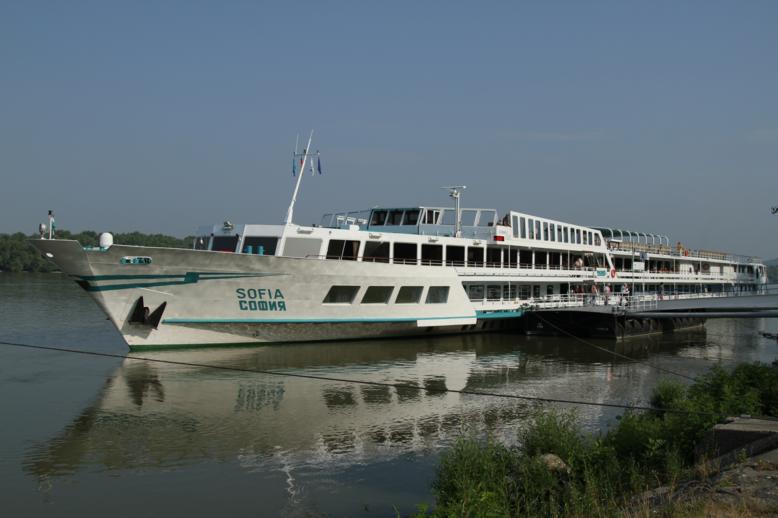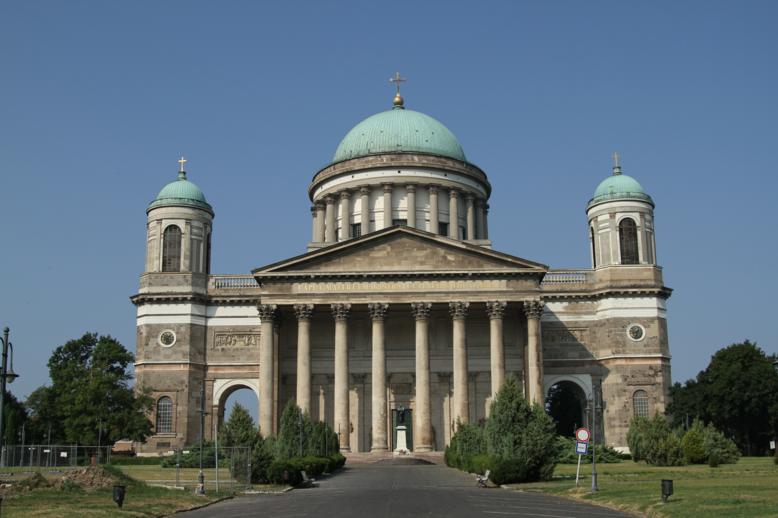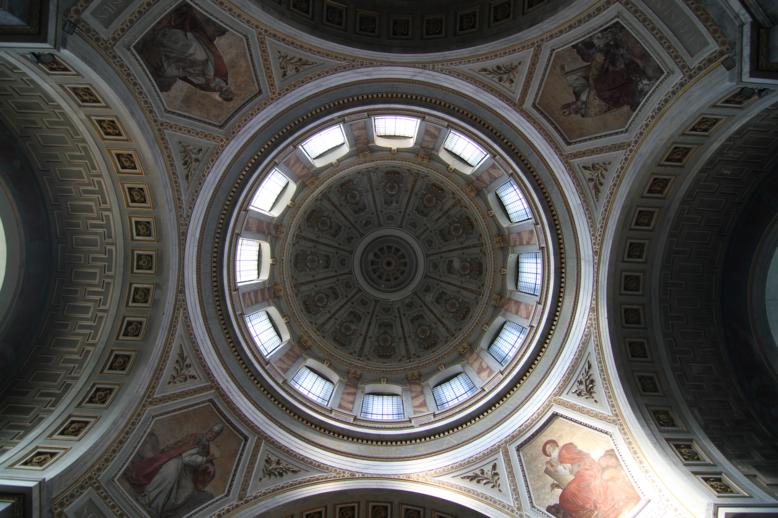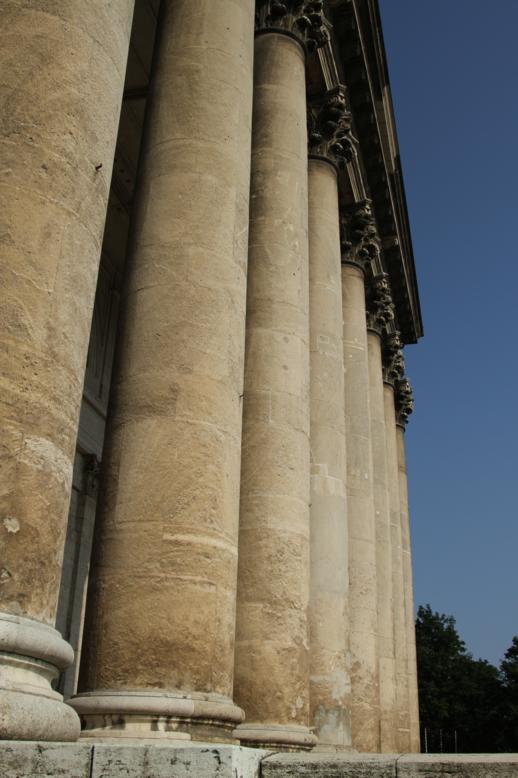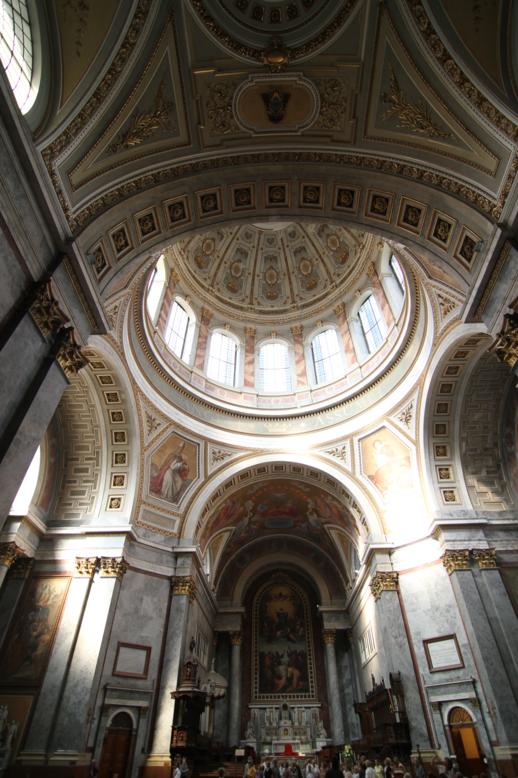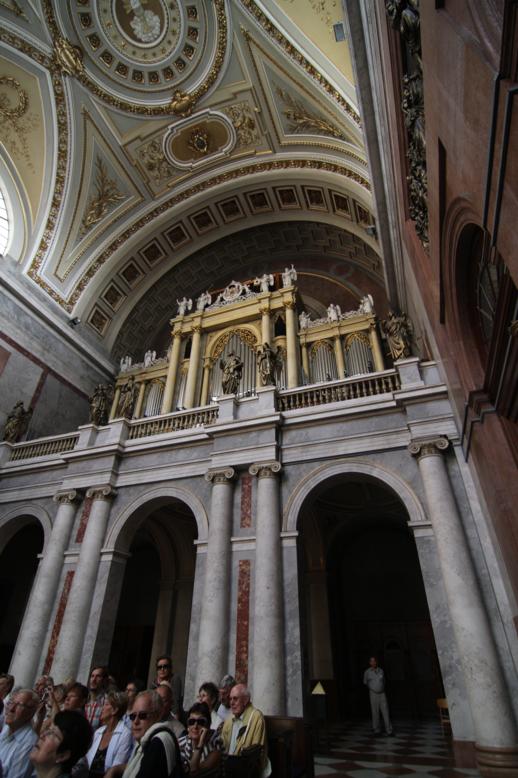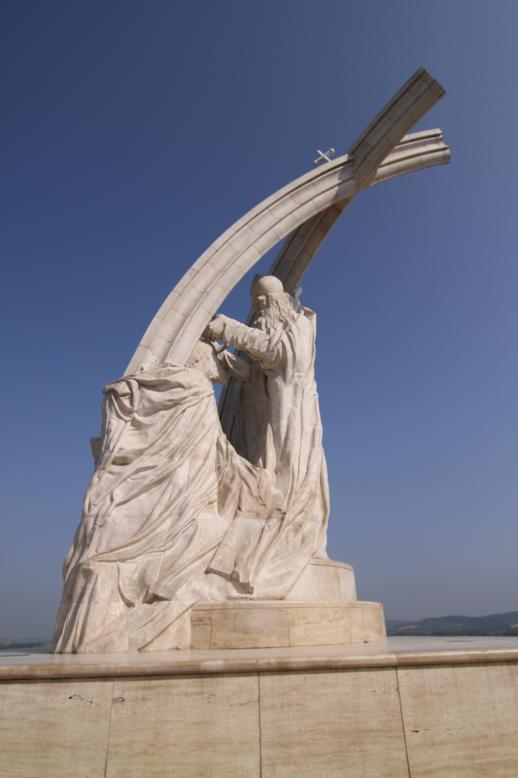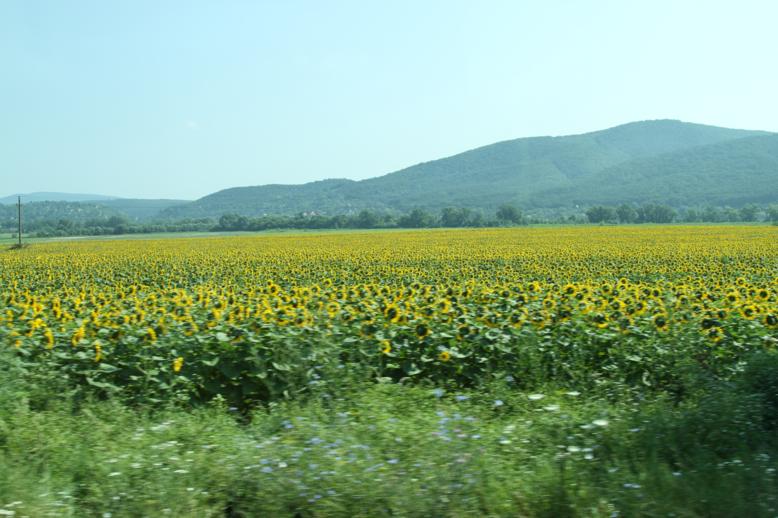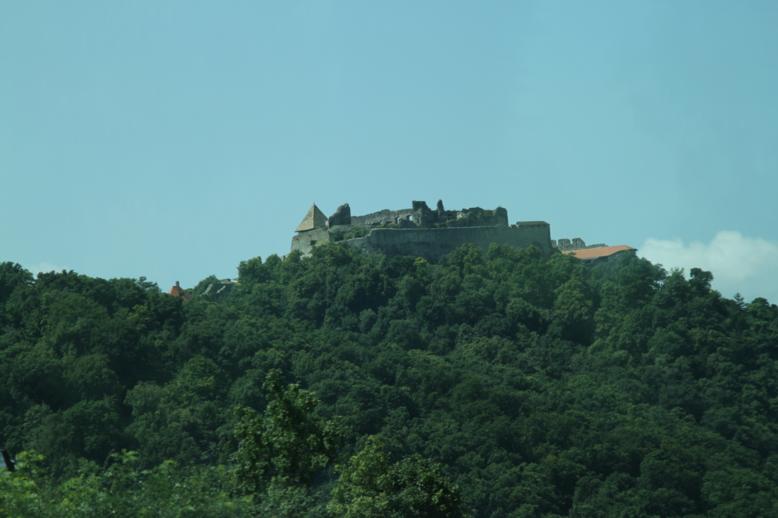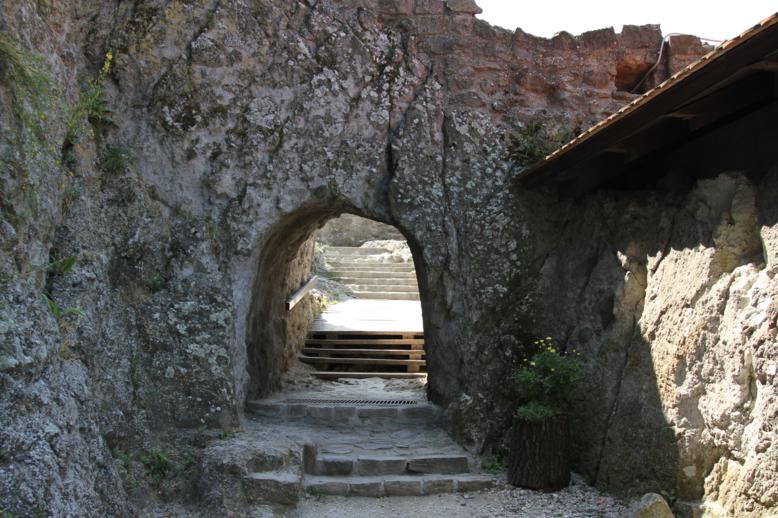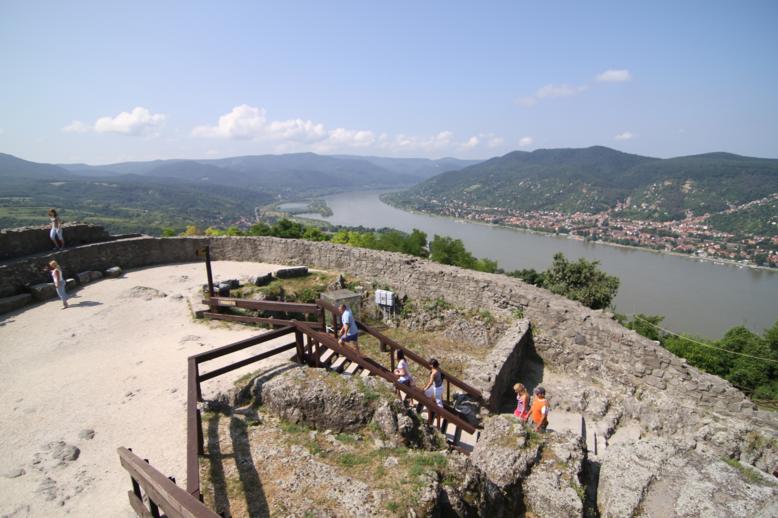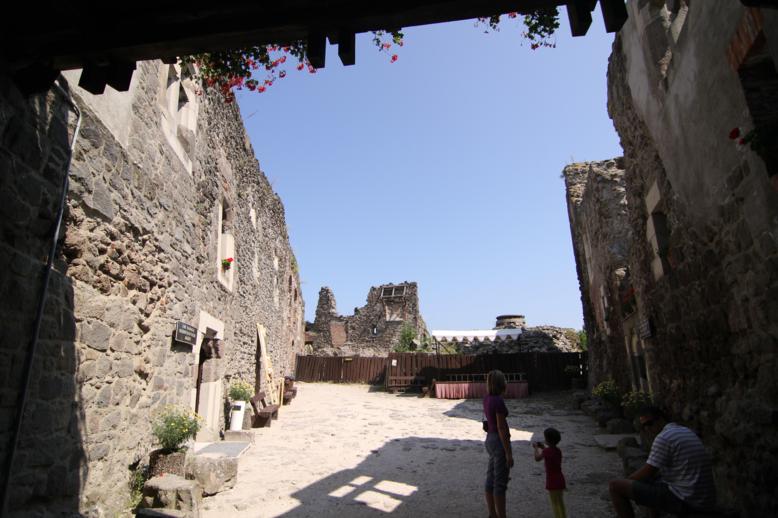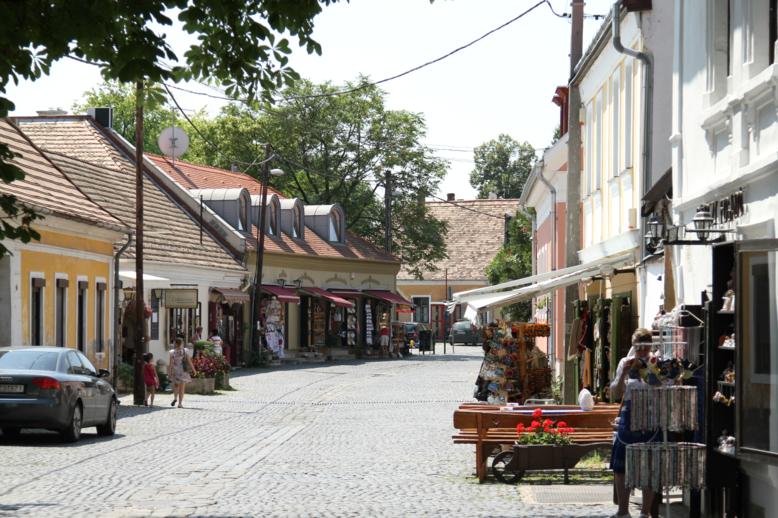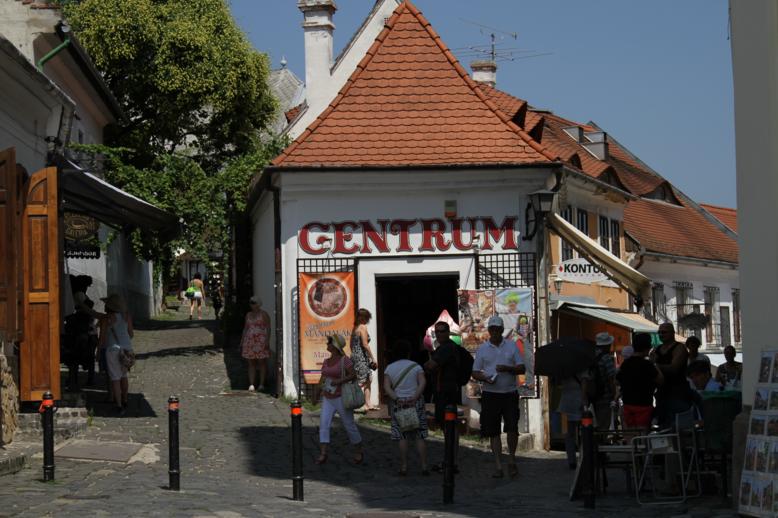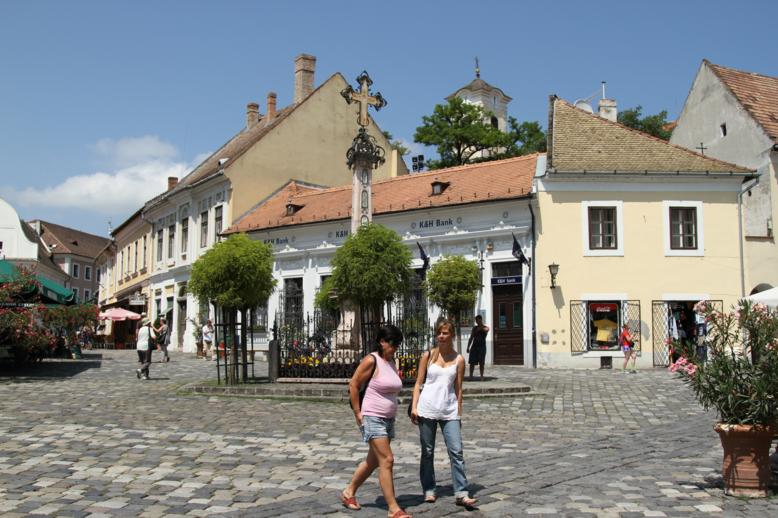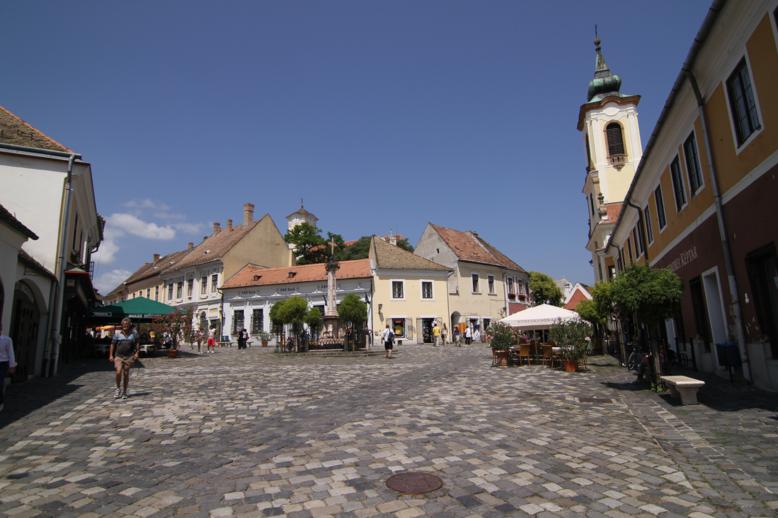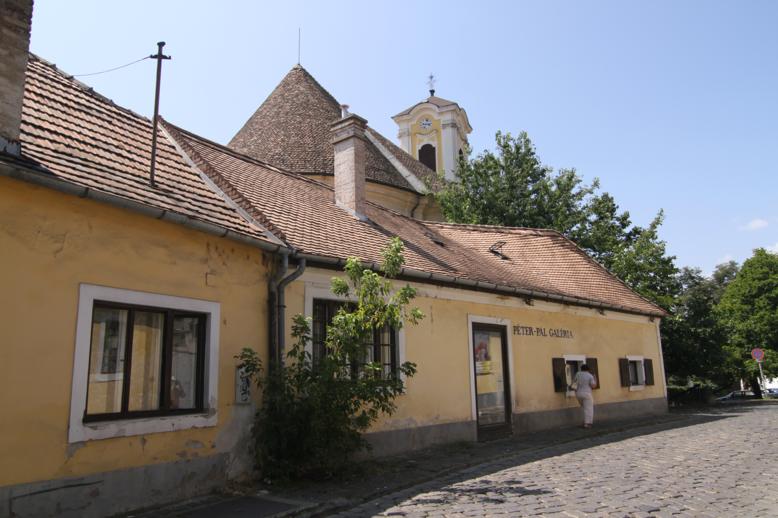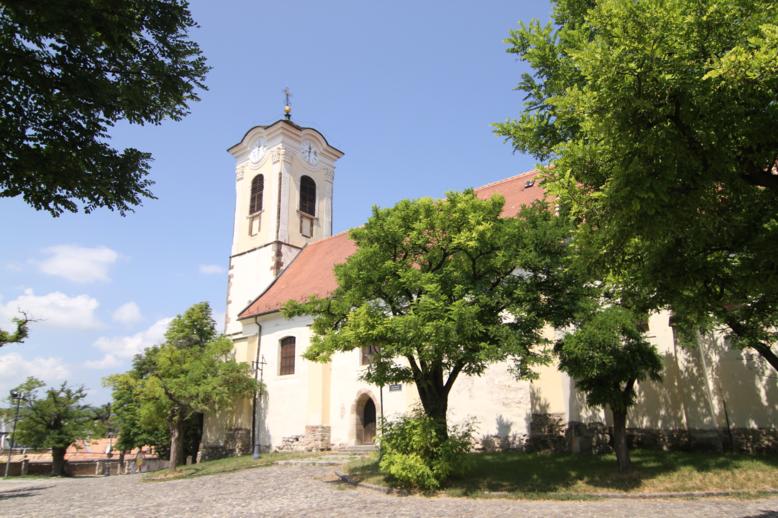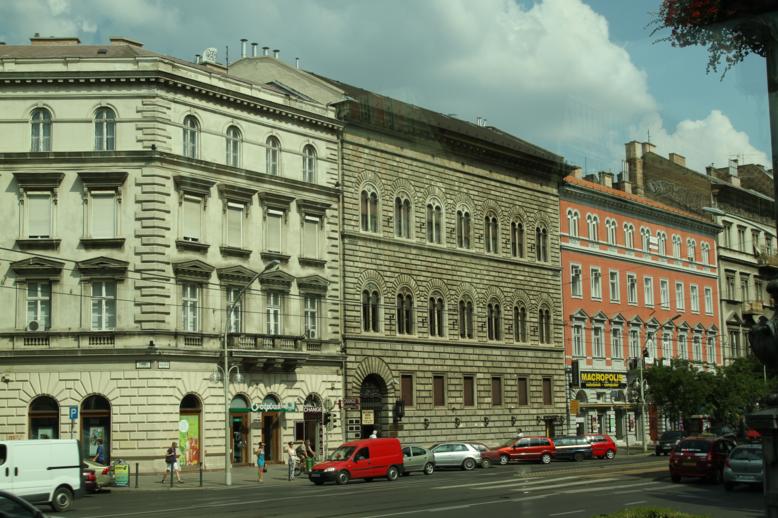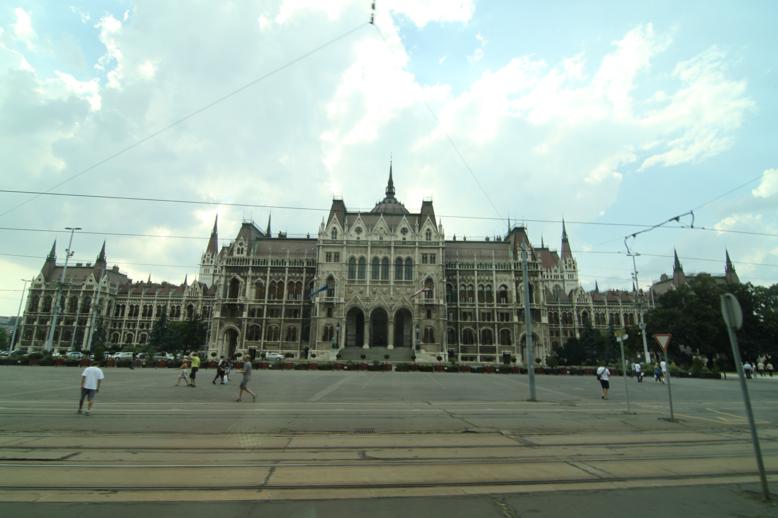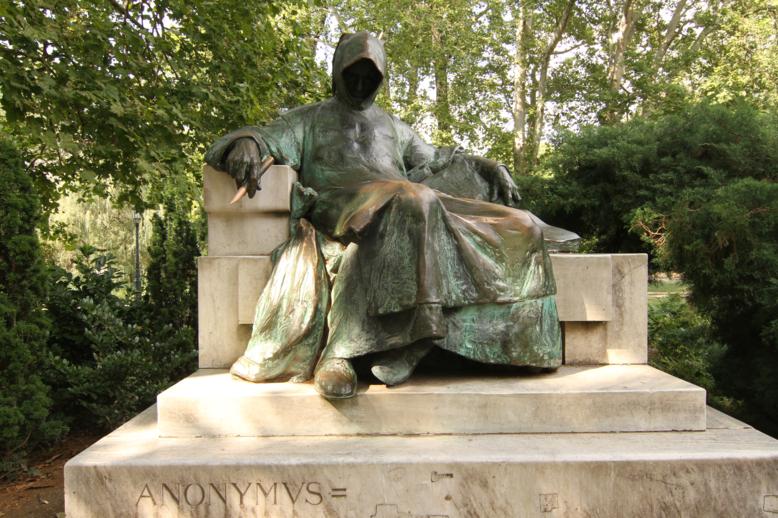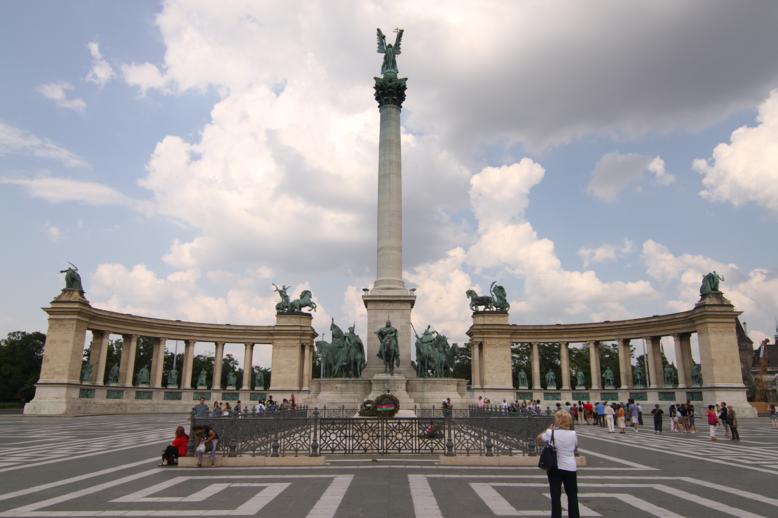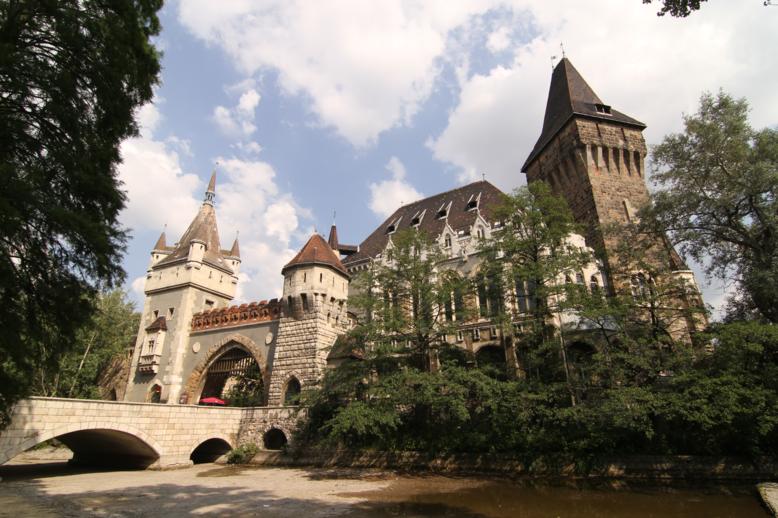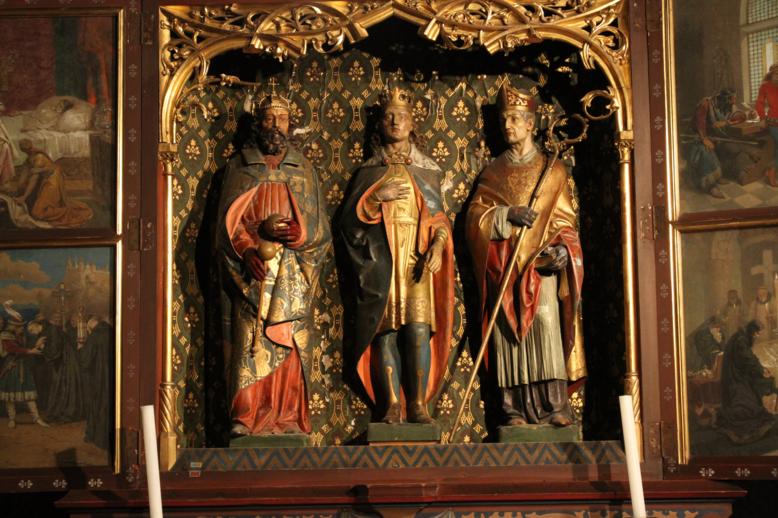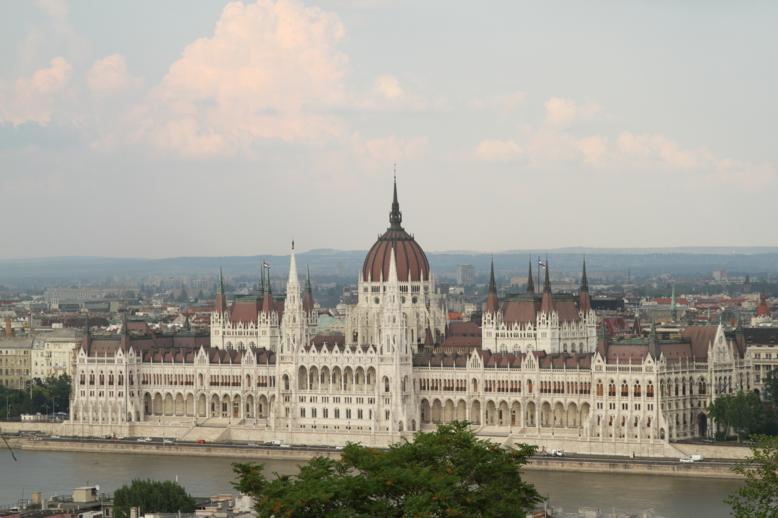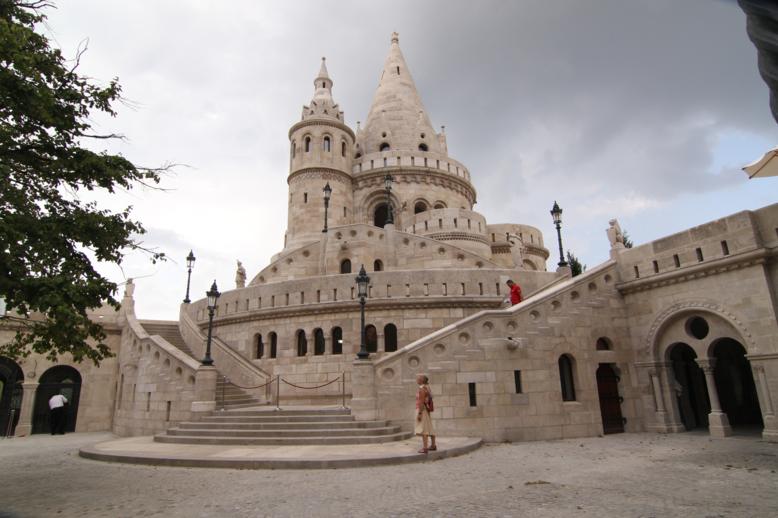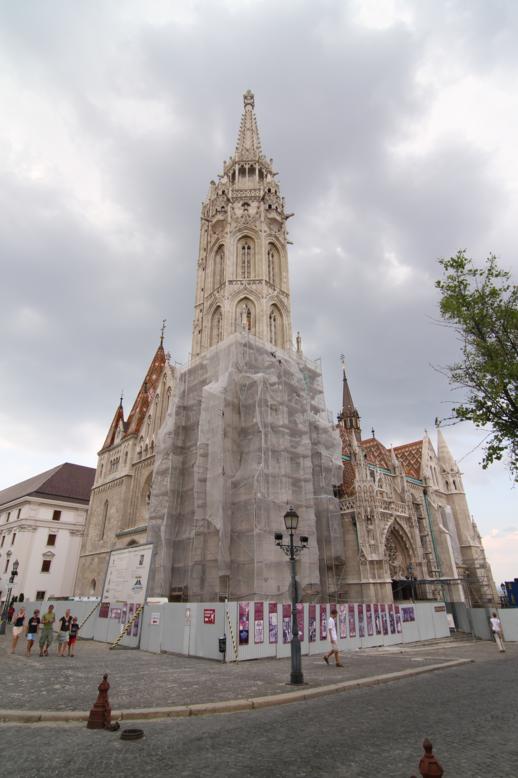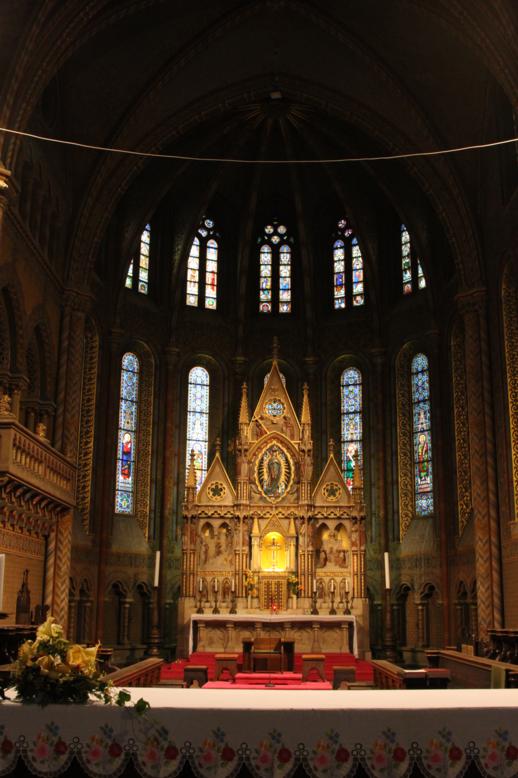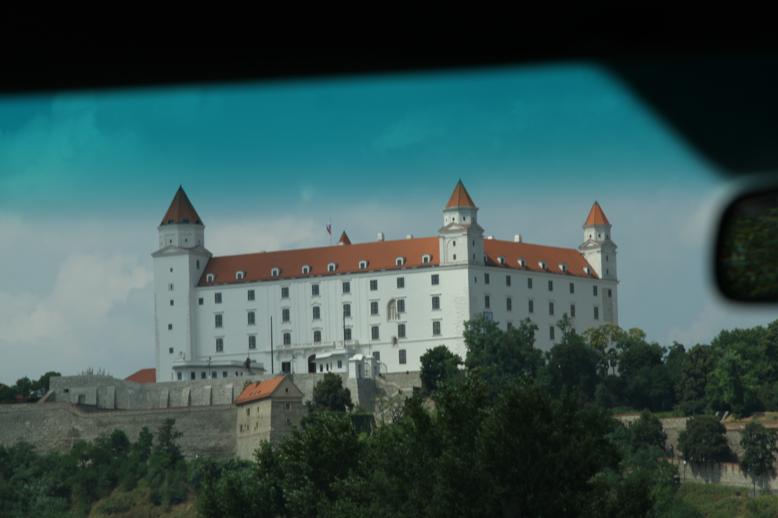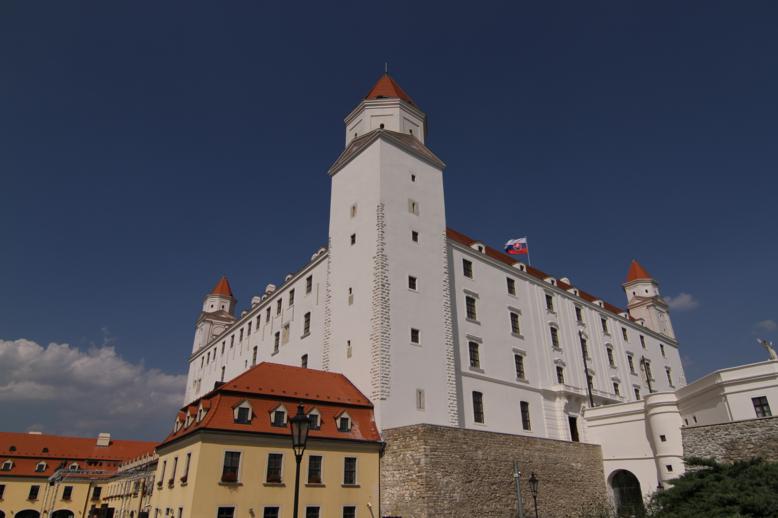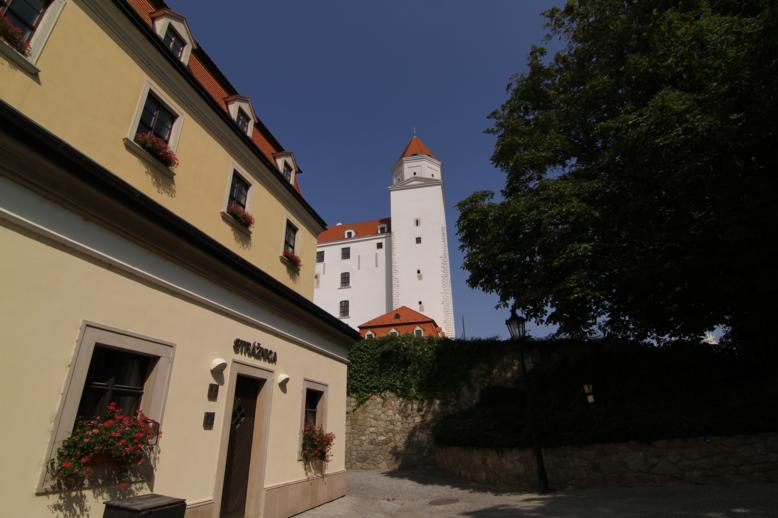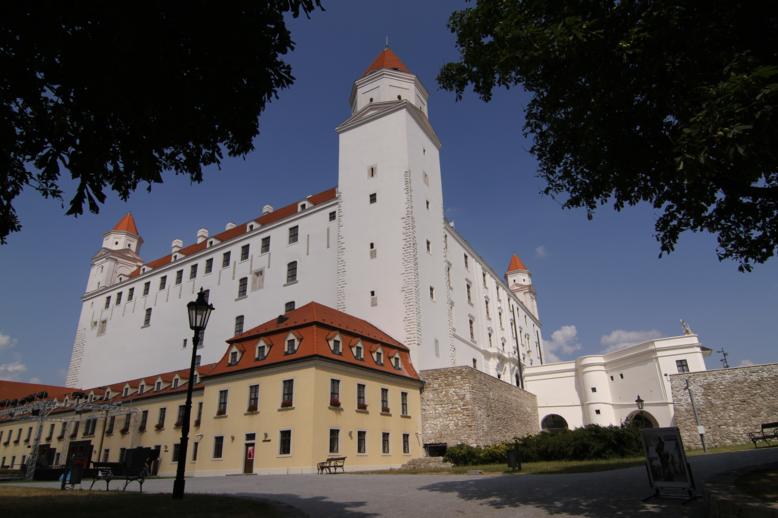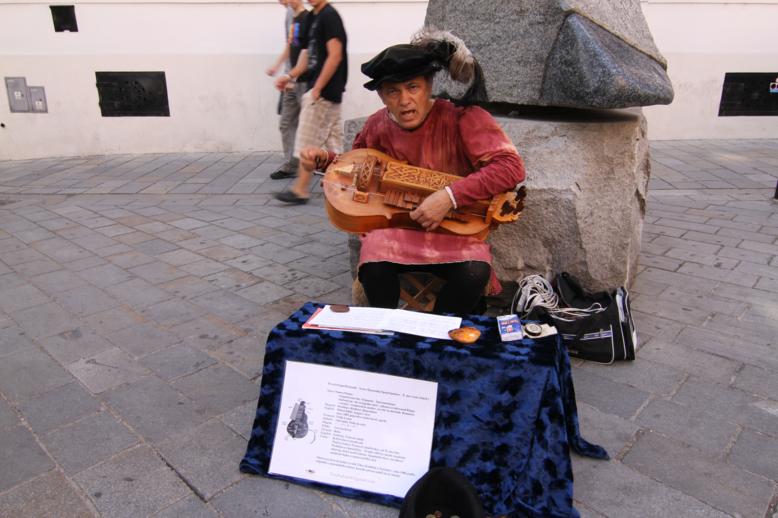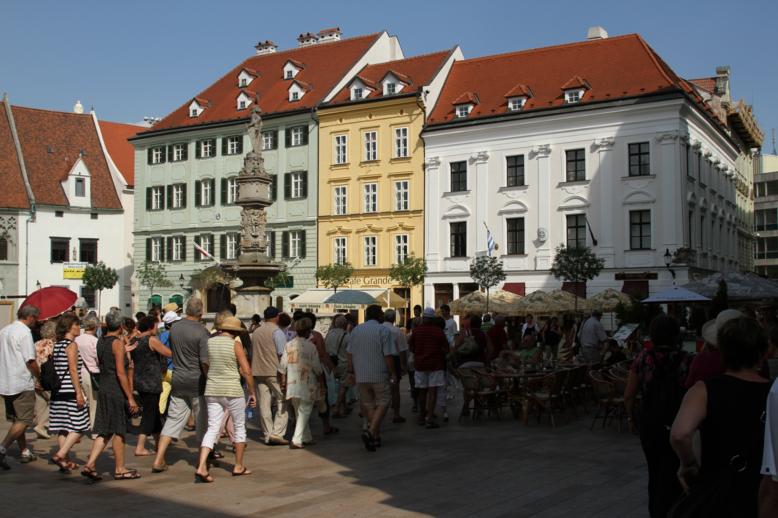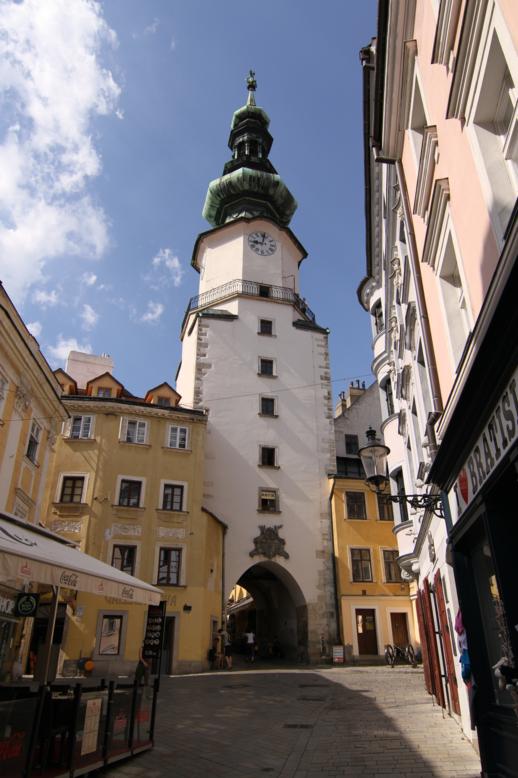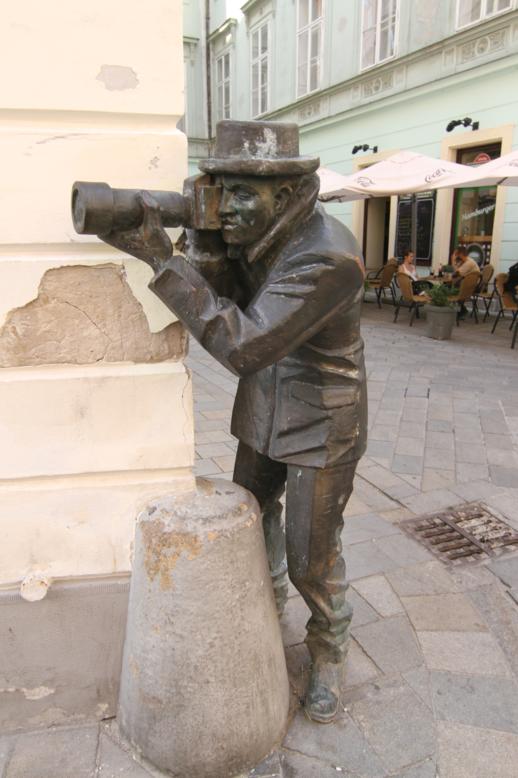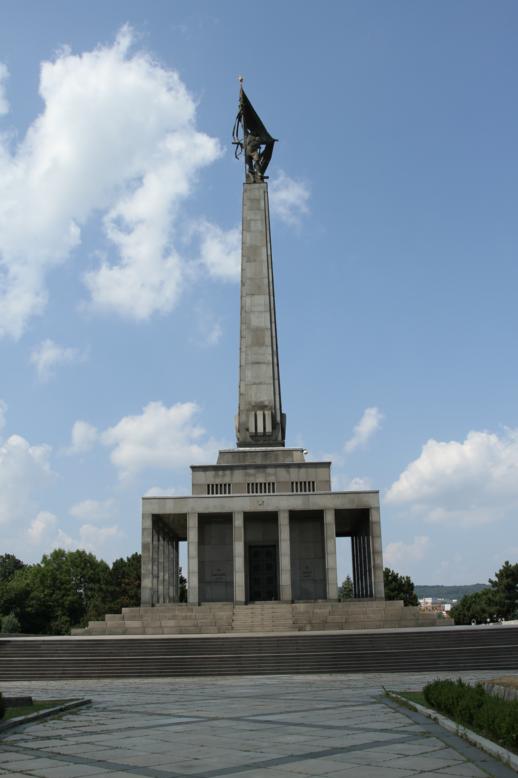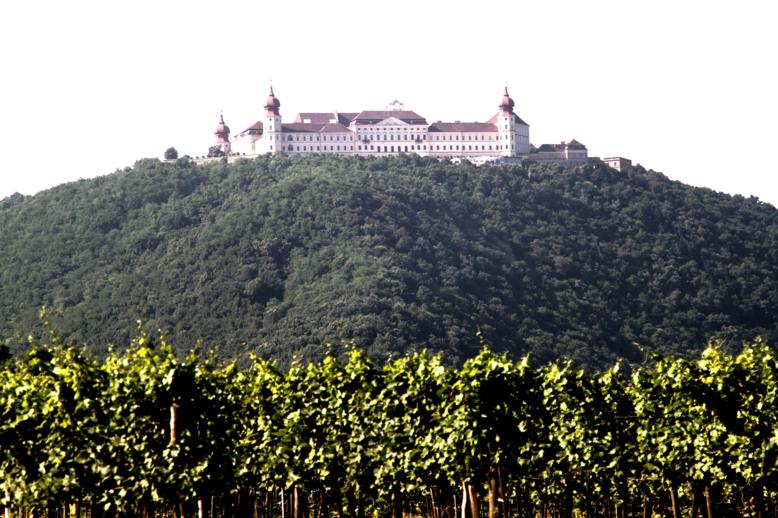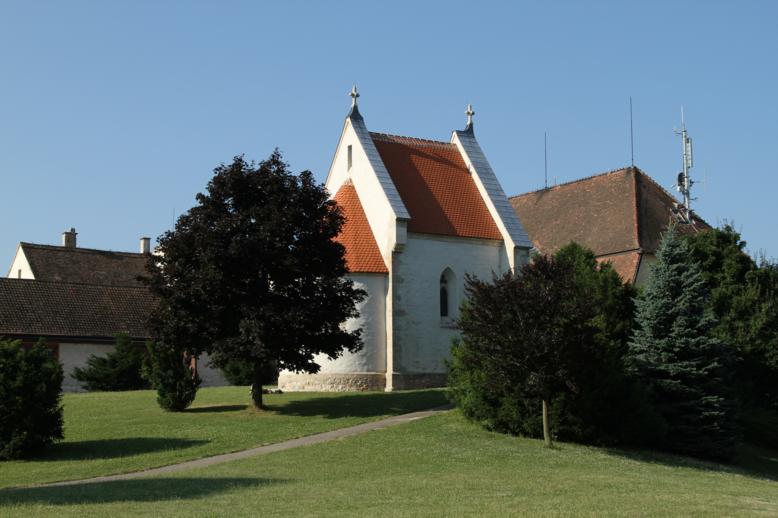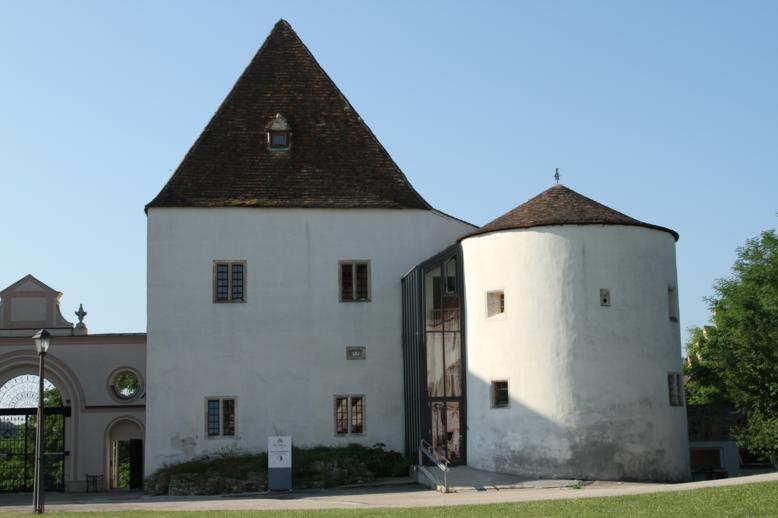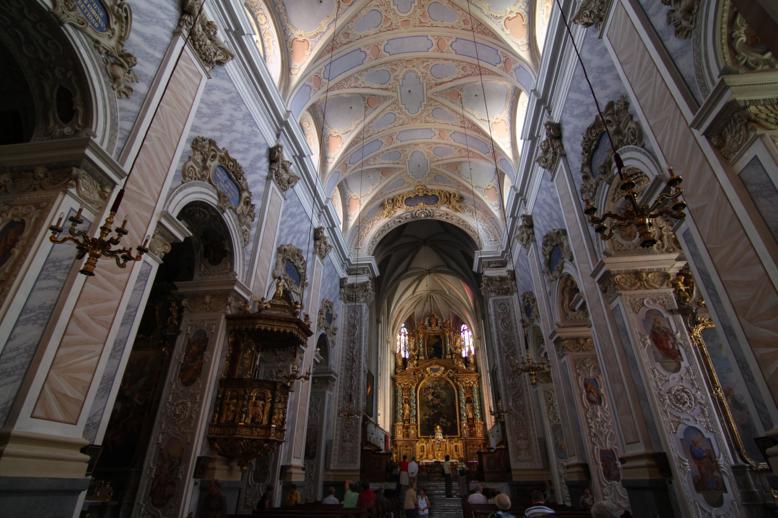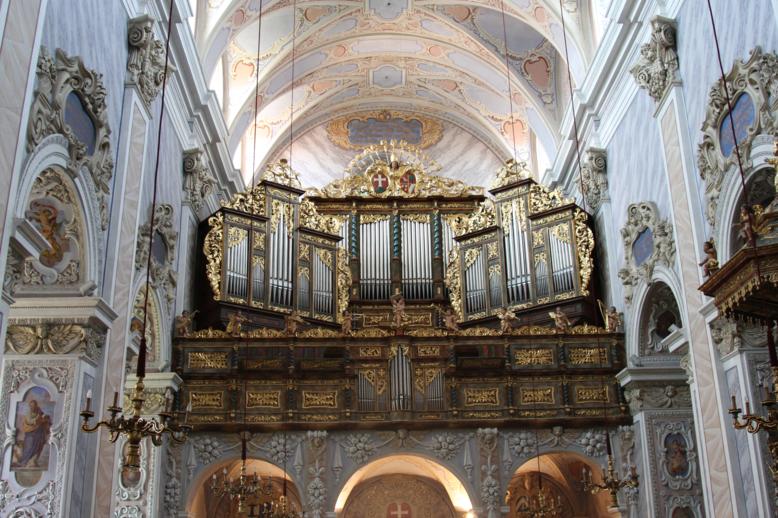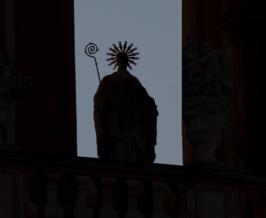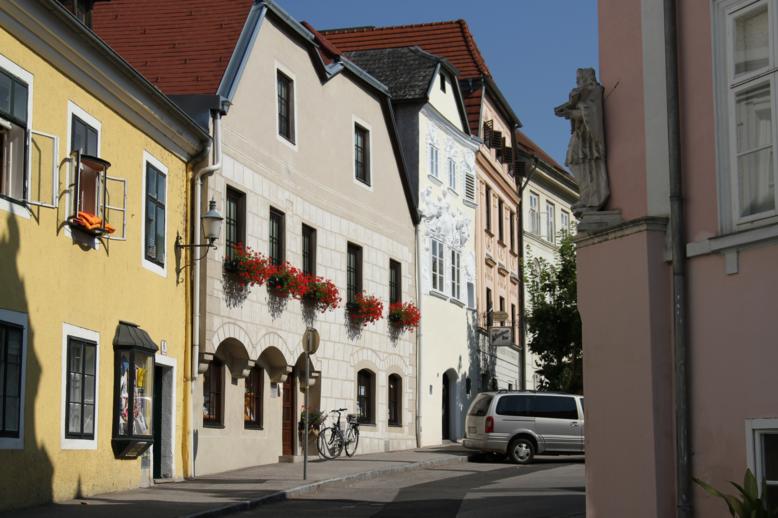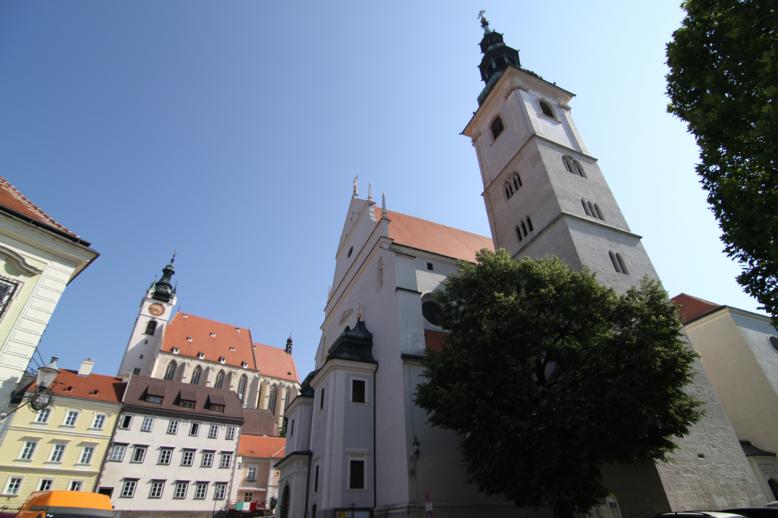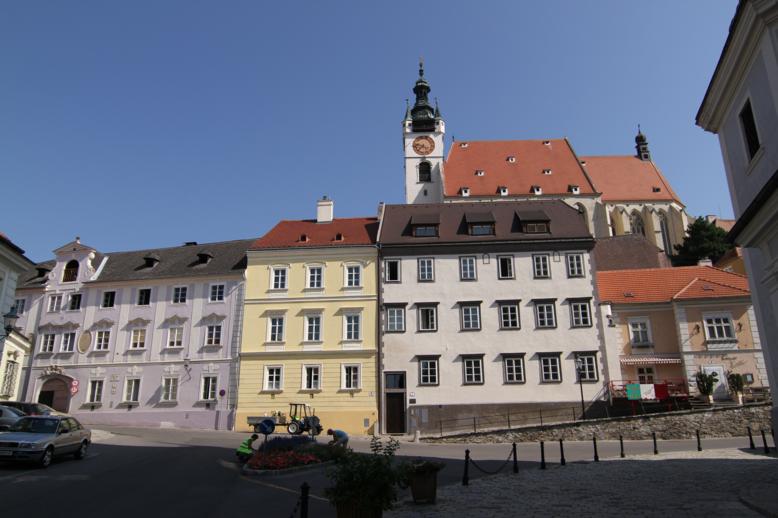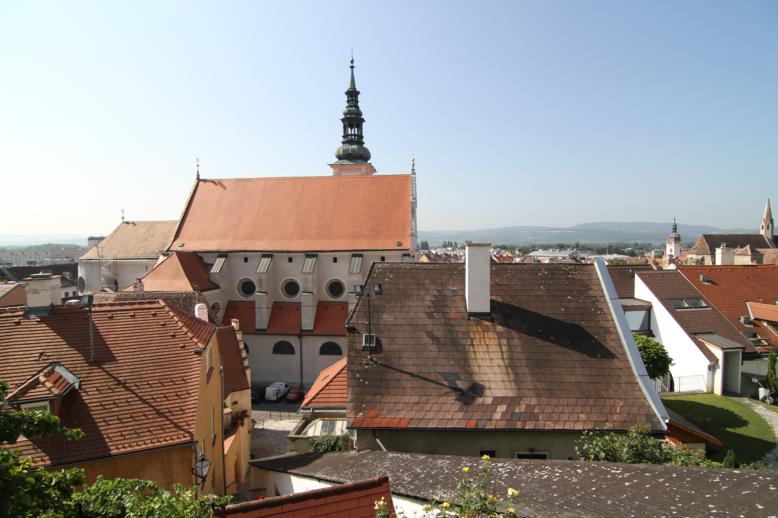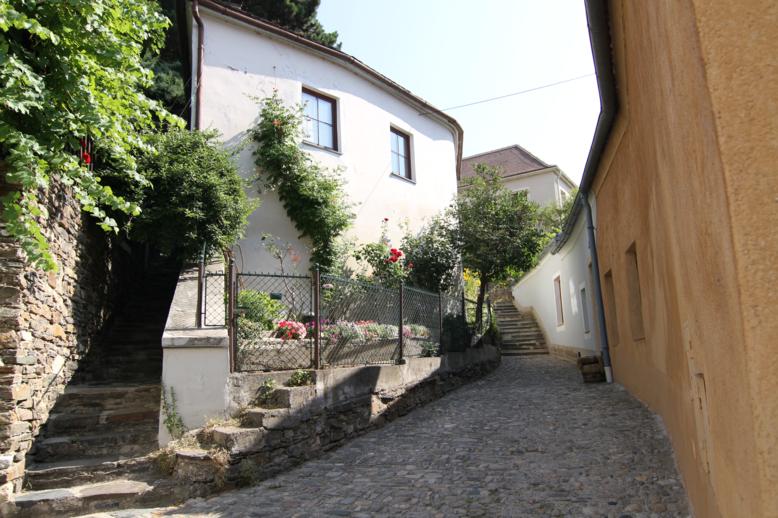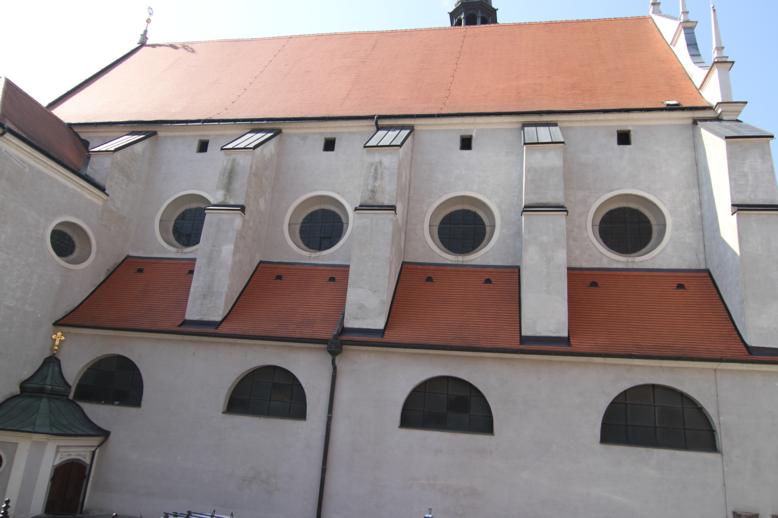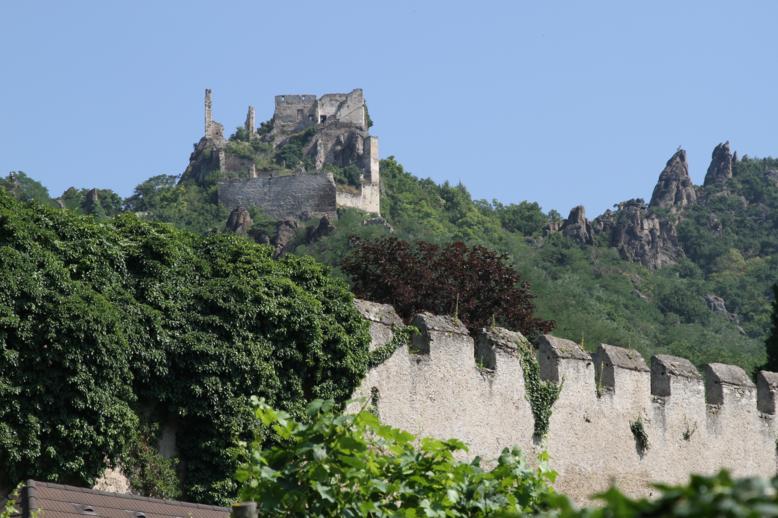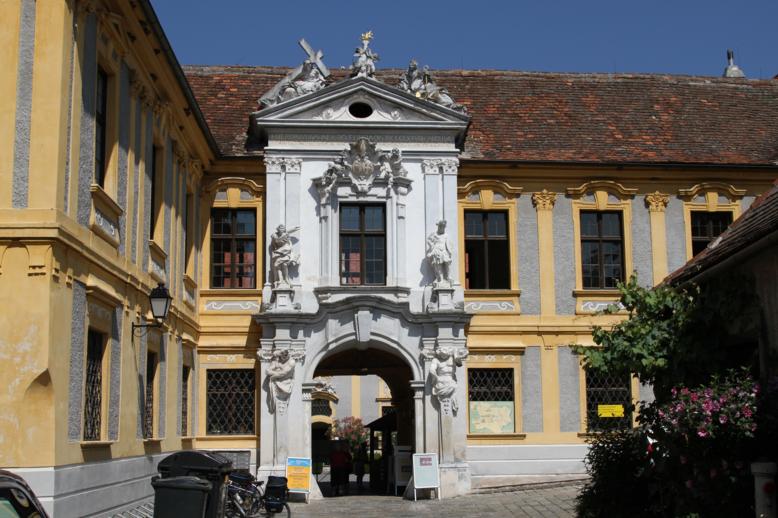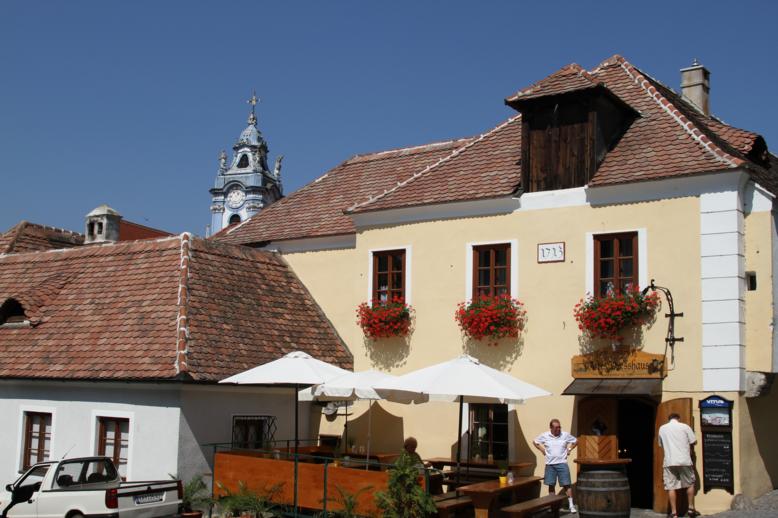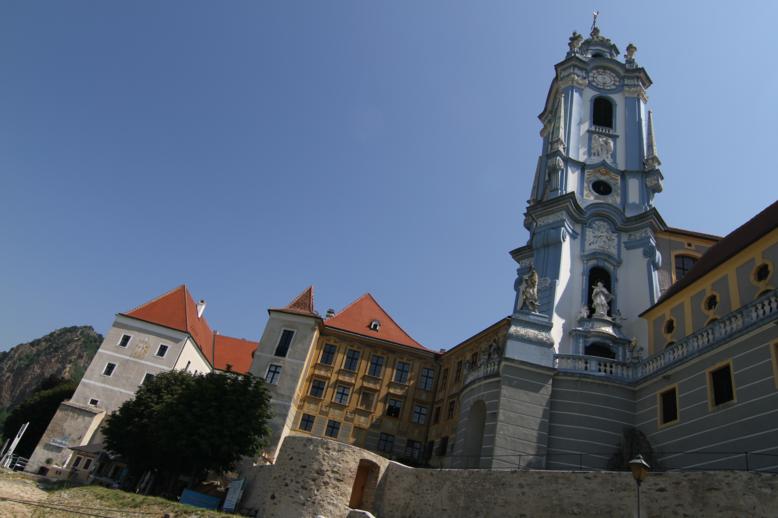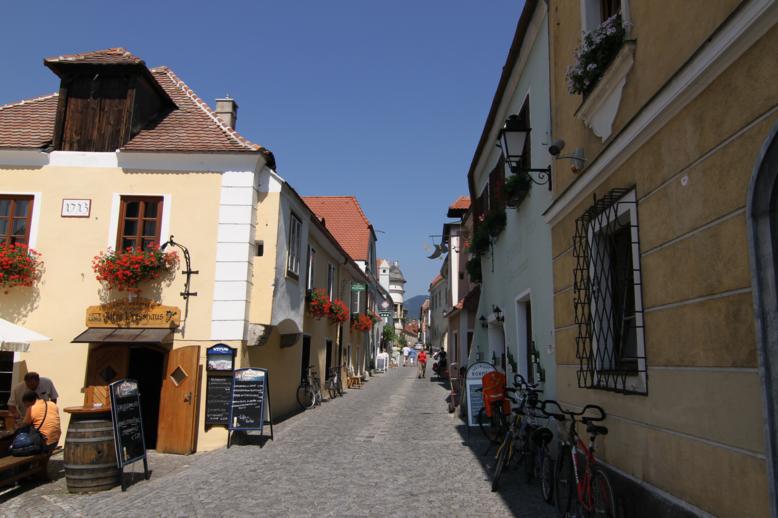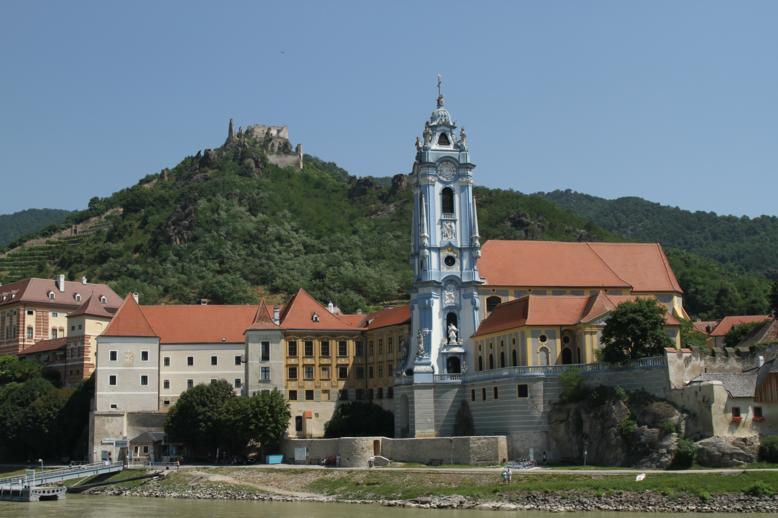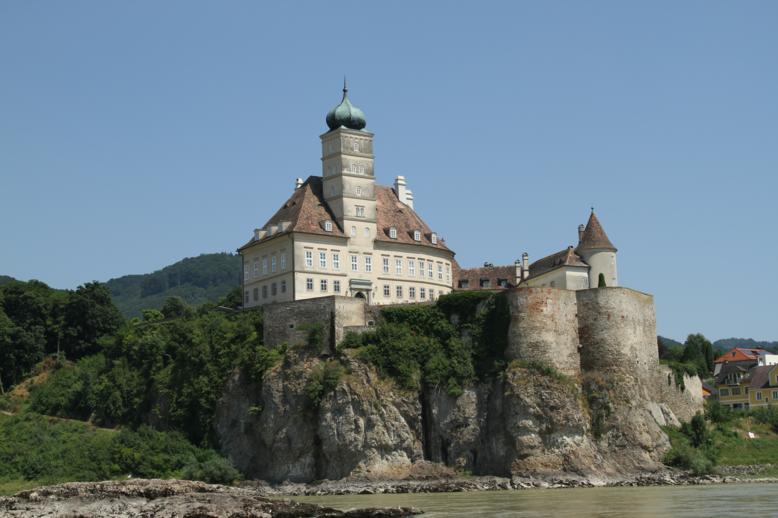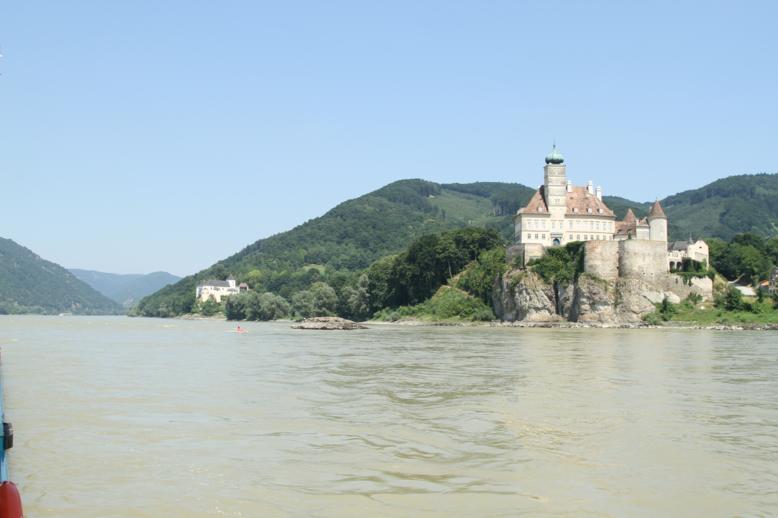|
Tuesday
20th. July 2010 (Temperature at 1:00pm: 35˚C)
We arrived at Esztergom (Pronounced: Ester-gom), Hungary, at about
8:00am and began our bus tour at 8:30. The first stop was the cathedral
overlooking the Danube with Slovakia on the far bank. Esztergom is the
birthplace of St. Stephen and the cathedral is the largest Catholic
church in Hungary. St. Stephen was the first king of Hungary. It has 22m
high Corinthian columns in the front and the top of the dome is 75
metres above floor level. The construction began in 1822 and was
completed 42 years later. It was consecrated in 1856 before it was
completed. The original organ had 1,000 pipes but was rebuilt after WWII
and now has 8,000 pipes!! The massive white statue overlooking the
Danube is of Pope Sylvester canonising King Stephen
After passing through fields of
sunflowers, out second stop was at the ruined castle at Visegrad (Pronounced "Viss-e-grard")which
dates back to the 1500s when Hungary was ruled by the Turks for 40
years.
The last stop was at the town of Szentendre (the correct pronunciation
sounds more like "Saint Andrew"). This little town has an "old district"
which is now filled with art and craft shops.
We returned to the boat for lunch.
The MS Sofia had sailed the 60 - 70 kms. downstream to Budapest while we
had been traveling overland by bus.
At 3:00pm we went on a city tour of Budapest, Hungary. We first visited
the Pest side (Pronounced: "Pesht") and then drove up to the Buda side.
Looked inside the St. Matthias Church (St Matthew) and took photos of the Danube
and the Pest side on the far bank (including the huge Parliament House)
from the Fisherman's Bastion with its seven towers.
We were offered an evening tour to see the lights of Budapest, but this
turned out to be a bit of a waste of time as the bus route followed the
afternoon tour route and the lights were not spectacular.. We were back
on board by 10:30pm and set sail immediately for Bratislavia.
Wednesday
21st. July 2010 (Temperature: Mid 30s˚C)
We sailed back upstream all night and all morning. After lunch we
arrived in Bratislava the capital of Slovakia. Like most other "River"
cities it is dominated by a castle. We first visited a column of
remembrance where there is a mass grave for the Russians who liberated
the country from the Nazis.
Slovakia, unlike Hungary which had to be bailed out by the EU two years
ago, seems to have a thriving manufacturing industry, with a number a
car plants and heavy manufacturing as well as a white goods industry. We
were shown the old town centre, which has been restored, Parliament
House, The President's Palace etc, etc ... and the narrowest building in
Europe, which is now a fast food outlet and is wedged in between the
city wall and another building. There were a couple of buskers in the old
section, one of whom was playing a "hurdy girdy" and a number a creative
bronze statues.
|
 |
Thursday
22nd. July 2010 (Temperature: mid 30s˚C)
We birthed at Dürnstein, Austria, as we were having breakfast. Dürnstein
is the beginning of the Wachau Valley and this is the first time we have
seen hills on either side of the Danube. It has, up until now, been
flanked by tall green trees and the surrounding flat countryside.
It is now quite similar to the countryside we saw on our 3 hour Rhine
trip a week of so ago with hills, castles and churches overlooking the
river. By 8:30am we had met up with our local guide, Kristina, and were
driven by bus through the vineyards to the Benedictine monastery of Sift Göttenweig, just out of the township of Krems. We were allowed to take
photos inside the church which made a pleasant change. We had a short
photo stop on the way down from the monastery so that we could take
photos of it way up on the hill.
We were then driven
to the town of Krems. Apart from tourists, Krem has a steel mill and
numerous small wineries. Like all these towns and cities it is dominated
by churches. The catholic church is very strong in this part of Austria.
I managed to find an Apothek and bought some Echinacea for just over
€11.
From here we bused
and then had a short walk back to the little hamlet of Dürnstein. This
is the town in which Richard the Lion Heart was held prisoner and held
to ransom by a colleague after the Third Crusade. The English finally
paid large payment of silver to get him back. We bought a 500ml. bottle
of apricot liqueur for €22 from one of the numerous spirits shops.
Dürnstein has a main street only and is dominated by the ruins of an old
castle on the hilltop above it and number of churches. The most
significant being the one with the "blue" tower.
We walked back to
our boat and departed at 12 noon. The afternoon was free to view the
Wachau Valley as we moved slowly towards our destination of Passau in
Germany.
|




